 Does the buzz phrase “responsible pet ownership” communicate a valuable message, or is it another marketing success but reality failure? This issue was addressed in one of the first catch-up journal articles I read during my COVID-19 downtime. Entitled “The Responsible Dog Owner: The Construction of Responsibility”, the open-access study published in Anthrozoös explored the value of the concept of responsible pet ownership.
Does the buzz phrase “responsible pet ownership” communicate a valuable message, or is it another marketing success but reality failure? This issue was addressed in one of the first catch-up journal articles I read during my COVID-19 downtime. Entitled “The Responsible Dog Owner: The Construction of Responsibility”, the open-access study published in Anthrozoös explored the value of the concept of responsible pet ownership.
Does the use of this phrase in all aspects of companion animal—but especially canine—medical and behavioral care and welfare elicit a specific response in everyone who reads or hears it? Like other studies that researched this issue, this study also concluded that it does not. Like other studies it, too, noted that how pet owners interpreted the meaning of the phrase was based on emotion, not knowledge.
Although depressing, this seemingly irrational approach makes a certain sense. Our brains aren’t predisposed to, nor wired for, rational thought. 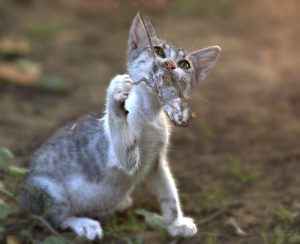 Despite all those higher brain centers that theoretically make us superior animals, the fact remains that all incoming stimuli goes to the emotional centers of our brains first. Then it moves on to the memory centers which add their own spin to its interpretation as well as edits and updates those memories. Only then does it go to those higher brain centers for processing. So even though this results in a meaning that makes sense to us, that doesn’t necessarily mean it will make sense to others. It also means that it takes a lot of commitment to overcome all that to gain an objective view to help our animals!
Despite all those higher brain centers that theoretically make us superior animals, the fact remains that all incoming stimuli goes to the emotional centers of our brains first. Then it moves on to the memory centers which add their own spin to its interpretation as well as edits and updates those memories. Only then does it go to those higher brain centers for processing. So even though this results in a meaning that makes sense to us, that doesn’t necessarily mean it will make sense to others. It also means that it takes a lot of commitment to overcome all that to gain an objective view to help our animals!
Based on their survey results, the authors of “The Responsible Dog Owner: The Construction of Responsibility” described four thought processes used by those perceived as irresponsible by others:
- Consequences of the Owner–Companion Animal Relationship Being too Weak or too Strong
- Differences in Interpretation of What is Best for the Animal
- Difficulties Predicting and Avoiding Situations of Conflict
- Differences in Tolerance of Negative Impacts of Dog Ownership
Although the authors acknowledged that these thought processes could occur simultaneously, they discussed each one separately. Doing so 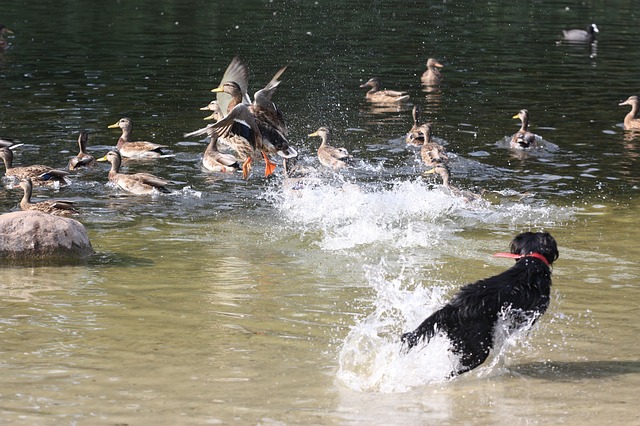 reflects standard research protocol. But for those of us who share our homes with animals and other people, simultaneously making our peace with these multiple processes regarding what constitutes responsible pet ownership often represents the norm.
reflects standard research protocol. But for those of us who share our homes with animals and other people, simultaneously making our peace with these multiple processes regarding what constitutes responsible pet ownership often represents the norm.
Most pet owners take a Goldilocks and the Three Bears approach to the degree of responsibility their relationship with their animal communicates. Most would say it’s just right. This makes sense because, if this weren’t true, they would change it.
At the same time, though, most people also acknowledge that they and their animals may not always relate to each other in the most responsible ways. But they work it out in one way or another most of the time. Most honest folks also will acknowledge that, if more than one person shares the household, those others may not share the same kind of responsible relationship with the animal that they do.
With this in mind, let’s create a living-learning behavioral/bond laboratory in which people who normally wouldn’t spend the bulk of the day every day with each other and some or all of their animals in the same household must suddenly do so. Think of it as a COVID-19 voluntary and enforced quarantine-inspired one. Next, let’s populate it with Cecelia Legandorfe, her dog Lionel, her daughter Eleanor, Eleanor’s 14-year-old twins (Erica and Ritchie), and their cat, Cedric, of unknown origins who showed up 5 years ago.
Now, let’s explore the thought processes described by the researchers as these apply to this family’s interactions with their animals and how they and others may judge them.
Consequences of the Owner–Companion Animal Relationship Being too Weak or too Strong
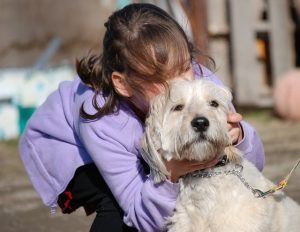
What kinds of owner-companion animal relationships normally exist in this household? Cecelia unashamedly will tell anyone that she’s the epitome of a responsible dog owner.
“I love Lionel to bits and would die without him,” she boasts. “We’re soul mates and he’s never out of my sight if I can help it. I don’t think what I do is excessive, either” she adds. “It’s what any responsible dog owner would do.”
Her daughter, Eleanor, describes herself as a “realistic” dog owner. She believes that a well-exercised dog is a well-behaved dog. She also believes that dogs prefer to run loose. Moreover she believes that other responsible dog owners would agree.
“It’s cruel to keep dogs cooped up indoors like my mom does Lionel,” she states. “The only thing worse is her putting a leash on him and letting him drag her around the neighborhood. That’s flat-out irresponsible and cruel! But every time I bring it up, we end up fighting.”
Because Eleanor’s job normally requires long hours at work and extended work-related trips to other locations, her and her mother’s conflicting 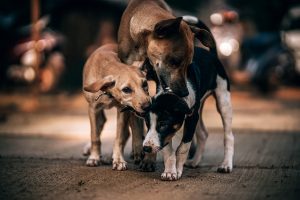 definitions of responsible pet ownership normally create few problems. But when they must share their relatively small house with each other and Lionel courtesy of COVID-19, their opposite views become a source of constant conflict. In addition to any canine behavioral or health problems arising from their skewed views of responsible pet ownership, Lionel also must cope with those occurring in response to his humans’ bickering about him.
definitions of responsible pet ownership normally create few problems. But when they must share their relatively small house with each other and Lionel courtesy of COVID-19, their opposite views become a source of constant conflict. In addition to any canine behavioral or health problems arising from their skewed views of responsible pet ownership, Lionel also must cope with those occurring in response to his humans’ bickering about him.
Where do the twins fit in?
Erica tries to teach Lionel to walk on a leash because she enjoys training. Her brother is a runner and takes the off-lead dog running with him on the trails around their home. While Ritchie follows the trails, Lionel follows his nose wherever it leads him. Not much consistency here for the dog either. Both perceive their behaviors as responsible and in the best interests of the dog. As befits her orientation, Cecelia brags about her granddaughter’s mature sense of responsibility and bemoans her grandson’s lack of same.
Differences in Interpretation of What is Best for the Animal
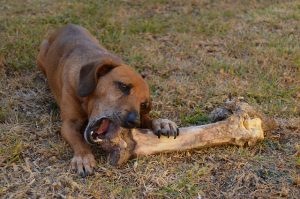 In addition to each family member having a unique definition of what constitutes responsible exercise for Lionel, their definitions of what constitutes a responsible diet for their pets also vary. Ericka believes that feeding Lionel and Cedric the premium canine and feline foods promoted in the media ads she adores is the most responsible thing to do. When she mentions these products to her brother, he scoffs, “Well, they would say that wouldn’t they? They want people to buy their products!”
In addition to each family member having a unique definition of what constitutes responsible exercise for Lionel, their definitions of what constitutes a responsible diet for their pets also vary. Ericka believes that feeding Lionel and Cedric the premium canine and feline foods promoted in the media ads she adores is the most responsible thing to do. When she mentions these products to her brother, he scoffs, “Well, they would say that wouldn’t they? They want people to buy their products!”
Meanwhile, the kids’ mom notes that the well-balanced, less expensive pet foods she buys on sale at the supermarket are just as good. Cecelia’s response to all of them is a huffy, “I won’t feed Lionel or Cedric anything but what I eat myself! I love them too much to do that!”
Difficulties Predicting and Avoiding Situations of Conflict
Because no agreement among the family members exists regarding what constitutes responsible pet ownership in routine situations, their ability to predict the proper response in less common situations is even less reliable. When Eleanor opens the door and turns Lionel loose, she hasn’t a clue what she’d do if he didn’t come back or came back seriously injured. Similarly, Richie has no idea what his response should or would be if Lionel took off after a wild animal, or if another dog or wild animal attacked him or his dog. Meanwhile, Erica’s mind is so full of visions of her and Lionel winning blue ribbons in obedience, she freezes when he takes off after a car instead of obeying her come command. And while Cecelia may gloat that Lionel’s and Cedric’s cosseted lifestyle with her protects them, the thought of what she’d do if either of them became ill or injured paralyzes her. Mustering a plan that the entire family would consider a valid responsible response to ensure their animals’ welfare seems impossible.
Differences in Tolerance of Negative Impacts of Animal Ownership
A recurrent theme in human relationships with companion animals involves striking the optimum balance between the cost of fulfilling what we 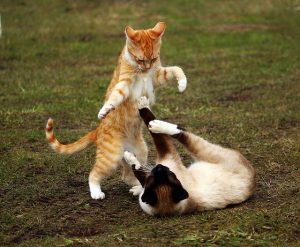 consider our responsibilities to our animals versus the benefits. Under normal (i.e., non-quarantine) circumstances when Cecilia spends the bulk of the day alone with Lionel and Cedric, she unequivocally could say that the benefits of her owner-pet approach far outweigh any costs. Similarly Eleanor could say that the companionship her mother and children get from the dog and cat is worth the amount that she—as the sole income generator in the household—allots for Lionel and Cedric’s care. But in the current situation, she can’t say what the future will bring. Maybe it will be better or maybe it will be worse.
consider our responsibilities to our animals versus the benefits. Under normal (i.e., non-quarantine) circumstances when Cecilia spends the bulk of the day alone with Lionel and Cedric, she unequivocally could say that the benefits of her owner-pet approach far outweigh any costs. Similarly Eleanor could say that the companionship her mother and children get from the dog and cat is worth the amount that she—as the sole income generator in the household—allots for Lionel and Cedric’s care. But in the current situation, she can’t say what the future will bring. Maybe it will be better or maybe it will be worse.
“Obviously, anything that poses a danger to my mother or children would take precedence over anything that happens to the animals,” she says.
But then she pauses and adds, “But it would be irresponsible of me to automatically rule out any extraordinary care for the animals because I know how much they mean to my mom and the kids. Especially when I need to be away from home a lot. It’s so difficult to know for sure what would be best for all of us—if such a thing even exists.”
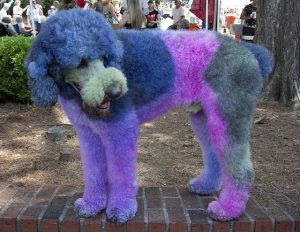 And so it is for most of us. While those who use “responsible pet ownership” to induce people to buy products, rescue animals they might not if they analyzed the situation less emotionally, or judge how others relate to their animals, trying to pin down exactly what the phrase means to us and our animals on any given day can be a lot more complicated.
And so it is for most of us. While those who use “responsible pet ownership” to induce people to buy products, rescue animals they might not if they analyzed the situation less emotionally, or judge how others relate to their animals, trying to pin down exactly what the phrase means to us and our animals on any given day can be a lot more complicated.
Responsible Pet Ownership Quiz
I embellished this commentary with a selection of photos of dogs and cats engaging in various behaviors. While the photographers may have had specific ideas regarding what they believed these animals communicated about responsible pet ownership, I doubt that everyone who saw them would agree. What do you and others in your real or virtual household think? Can you then adopt the opposite orientation–i.e., look at what you considered responsible as irresponsible or vice versa–to understand why others might feel that way?
Does the use of this phrase in all aspects of companion animal—but especially canine—medical and behavioral care and welfare elicit a specific response in everyone who reads or hears it? Like other studies that researched this issue, this study also concluded that it does not. Like other studies it, too, noted that how pet owners interpreted the meaning of the phrase was based on emotion, not knowledge.
Although depressing, this seemingly irrational approach makes a certain sense. Our brains aren’t predisposed to, nor wired for, rational thought. Despite all those higher brain centers that theoretically make us superior animals, the fact remains that all incoming stimuli goes to the emotional centers of our brains first. Then it moves on to the memory centers which add their own spin to its interpretation as well as edits and updates those memories. Only then does it go to those higher brain centers for processing. So even though this results in a meaning that makes sense to us, that doesn’t necessarily mean it will make sense to others. It also means that it takes a lot of commitment to overcome all that to gain an objective view to help our animals!
Despite all those higher brain centers that theoretically make us superior animals, the fact remains that all incoming stimuli goes to the emotional centers of our brains first. Then it moves on to the memory centers which add their own spin to its interpretation as well as edits and updates those memories. Only then does it go to those higher brain centers for processing. So even though this results in a meaning that makes sense to us, that doesn’t necessarily mean it will make sense to others. It also means that it takes a lot of commitment to overcome all that to gain an objective view to help our animals!
Based on their survey results, the authors of “The Responsible Dog Owner: The Construction of Responsibility” described four thought processes used by those perceived as irresponsible by others:
Although the authors acknowledged that these thought processes could occur simultaneously, they discussed each one separately. Doing so reflects standard research protocol. But for those of us who share our homes with animals and other people, simultaneously making our peace with these multiple processes regarding what constitutes responsible pet ownership often represents the norm.
reflects standard research protocol. But for those of us who share our homes with animals and other people, simultaneously making our peace with these multiple processes regarding what constitutes responsible pet ownership often represents the norm.
Most pet owners take a Goldilocks and the Three Bears approach to the degree of responsibility their relationship with their animal communicates. Most would say it’s just right. This makes sense because, if this weren’t true, they would change it.
At the same time, though, most people also acknowledge that they and their animals may not always relate to each other in the most responsible ways. But they work it out in one way or another most of the time. Most honest folks also will acknowledge that, if more than one person shares the household, those others may not share the same kind of responsible relationship with the animal that they do.
With this in mind, let’s create a living-learning behavioral/bond laboratory in which people who normally wouldn’t spend the bulk of the day every day with each other and some or all of their animals in the same household must suddenly do so. Think of it as a COVID-19 voluntary and enforced quarantine-inspired one. Next, let’s populate it with Cecelia Legandorfe, her dog Lionel, her daughter Eleanor, Eleanor’s 14-year-old twins (Erica and Ritchie), and their cat, Cedric, of unknown origins who showed up 5 years ago.
Now, let’s explore the thought processes described by the researchers as these apply to this family’s interactions with their animals and how they and others may judge them.
Consequences of the Owner–Companion Animal Relationship Being too Weak or too Strong
What kinds of owner-companion animal relationships normally exist in this household? Cecelia unashamedly will tell anyone that she’s the epitome of a responsible dog owner.
“I love Lionel to bits and would die without him,” she boasts. “We’re soul mates and he’s never out of my sight if I can help it. I don’t think what I do is excessive, either” she adds. “It’s what any responsible dog owner would do.”
Her daughter, Eleanor, describes herself as a “realistic” dog owner. She believes that a well-exercised dog is a well-behaved dog. She also believes that dogs prefer to run loose. Moreover she believes that other responsible dog owners would agree.
“It’s cruel to keep dogs cooped up indoors like my mom does Lionel,” she states. “The only thing worse is her putting a leash on him and letting him drag her around the neighborhood. That’s flat-out irresponsible and cruel! But every time I bring it up, we end up fighting.”
Because Eleanor’s job normally requires long hours at work and extended work-related trips to other locations, her and her mother’s conflicting definitions of responsible pet ownership normally create few problems. But when they must share their relatively small house with each other and Lionel courtesy of COVID-19, their opposite views become a source of constant conflict. In addition to any canine behavioral or health problems arising from their skewed views of responsible pet ownership, Lionel also must cope with those occurring in response to his humans’ bickering about him.
definitions of responsible pet ownership normally create few problems. But when they must share their relatively small house with each other and Lionel courtesy of COVID-19, their opposite views become a source of constant conflict. In addition to any canine behavioral or health problems arising from their skewed views of responsible pet ownership, Lionel also must cope with those occurring in response to his humans’ bickering about him.
Where do the twins fit in?
Erica tries to teach Lionel to walk on a leash because she enjoys training. Her brother is a runner and takes the off-lead dog running with him on the trails around their home. While Ritchie follows the trails, Lionel follows his nose wherever it leads him. Not much consistency here for the dog either. Both perceive their behaviors as responsible and in the best interests of the dog. As befits her orientation, Cecelia brags about her granddaughter’s mature sense of responsibility and bemoans her grandson’s lack of same.
Differences in Interpretation of What is Best for the Animal
Meanwhile, the kids’ mom notes that the well-balanced, less expensive pet foods she buys on sale at the supermarket are just as good. Cecelia’s response to all of them is a huffy, “I won’t feed Lionel or Cedric anything but what I eat myself! I love them too much to do that!”
Difficulties Predicting and Avoiding Situations of Conflict
Because no agreement among the family members exists regarding what constitutes responsible pet ownership in routine situations, their ability to predict the proper response in less common situations is even less reliable. When Eleanor opens the door and turns Lionel loose, she hasn’t a clue what she’d do if he didn’t come back or came back seriously injured. Similarly, Richie has no idea what his response should or would be if Lionel took off after a wild animal, or if another dog or wild animal attacked him or his dog. Meanwhile, Erica’s mind is so full of visions of her and Lionel winning blue ribbons in obedience, she freezes when he takes off after a car instead of obeying her come command. And while Cecelia may gloat that Lionel’s and Cedric’s cosseted lifestyle with her protects them, the thought of what she’d do if either of them became ill or injured paralyzes her. Mustering a plan that the entire family would consider a valid responsible response to ensure their animals’ welfare seems impossible.
Differences in Tolerance of Negative Impacts of Animal Ownership
A recurrent theme in human relationships with companion animals involves striking the optimum balance between the cost of fulfilling what we consider our responsibilities to our animals versus the benefits. Under normal (i.e., non-quarantine) circumstances when Cecilia spends the bulk of the day alone with Lionel and Cedric, she unequivocally could say that the benefits of her owner-pet approach far outweigh any costs. Similarly Eleanor could say that the companionship her mother and children get from the dog and cat is worth the amount that she—as the sole income generator in the household—allots for Lionel and Cedric’s care. But in the current situation, she can’t say what the future will bring. Maybe it will be better or maybe it will be worse.
consider our responsibilities to our animals versus the benefits. Under normal (i.e., non-quarantine) circumstances when Cecilia spends the bulk of the day alone with Lionel and Cedric, she unequivocally could say that the benefits of her owner-pet approach far outweigh any costs. Similarly Eleanor could say that the companionship her mother and children get from the dog and cat is worth the amount that she—as the sole income generator in the household—allots for Lionel and Cedric’s care. But in the current situation, she can’t say what the future will bring. Maybe it will be better or maybe it will be worse.
“Obviously, anything that poses a danger to my mother or children would take precedence over anything that happens to the animals,” she says.
But then she pauses and adds, “But it would be irresponsible of me to automatically rule out any extraordinary care for the animals because I know how much they mean to my mom and the kids. Especially when I need to be away from home a lot. It’s so difficult to know for sure what would be best for all of us—if such a thing even exists.”
Responsible Pet Ownership Quiz
I embellished this commentary with a selection of photos of dogs and cats engaging in various behaviors. While the photographers may have had specific ideas regarding what they believed these animals communicated about responsible pet ownership, I doubt that everyone who saw them would agree. What do you and others in your real or virtual household think? Can you then adopt the opposite orientation–i.e., look at what you considered responsible as irresponsible or vice versa–to understand why others might feel that way?